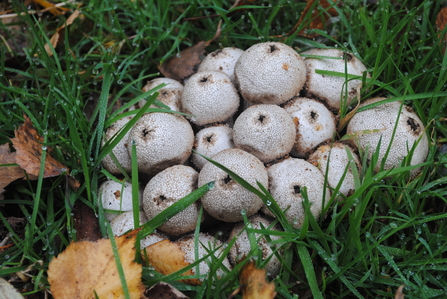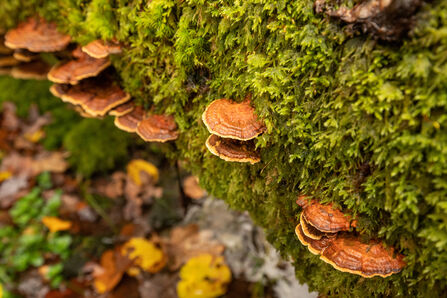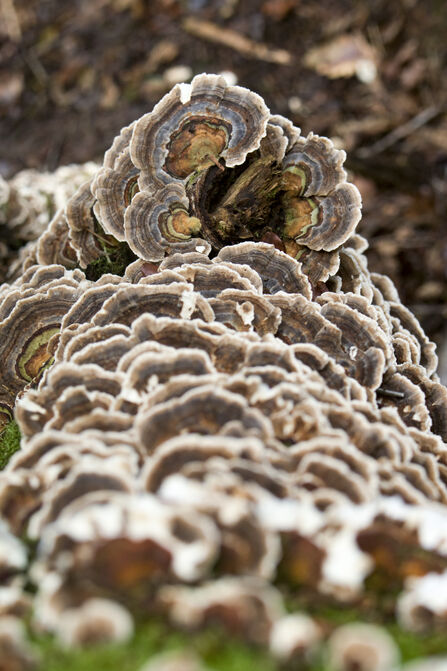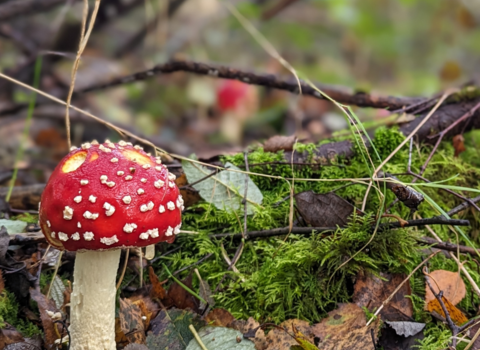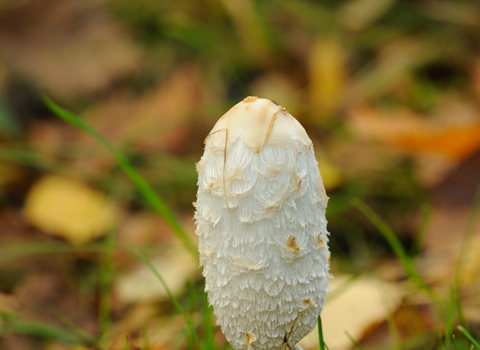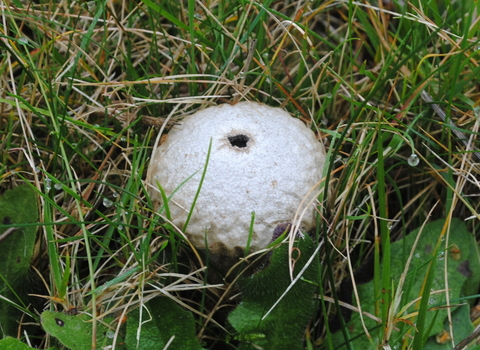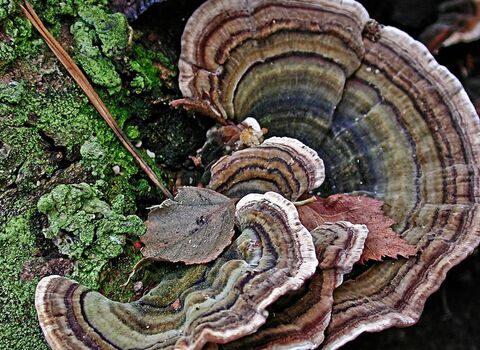Then: Woodland wonders take root
In Lapwing magazine’s Autumn/Winter 1996 issue, naturalist Peter Rodney Smith took readers on a journey through Lancashire’s woodlands to discover the hidden lives of fungi. Autumn, he wrote, was the season when “the better-known fungi appear in greater profusion” and with it, the forest floor came alive with strange and beautiful forms.
He described how the woods come alive with all shapes and sizes of fungi: from the smoky clouds of puffballs releasing their spores into the air, to the unmistakable scarlet caps of the Fly agaric (Amanita muscaria) peeking from beneath the ferns. Even the more elusive micro-species, he noted, were there if you looked carefully enough among the moss and leaf litter.
Peter explained how fungi are intimately linked with the trees around them. Each woodland type, deciduous or coniferous, hosts its own cast of characters. In the deciduous woods, you might have found Honey fungus (Armillaria mellea) clinging to stumps, or the earthy Penny bun also known as Porcini (Boletus edulis), prized by foragers. In the coniferous stands, species like the Sickener (Russula emetica), Larch bolete, and Rufous milk cap thrived among pine needles.


